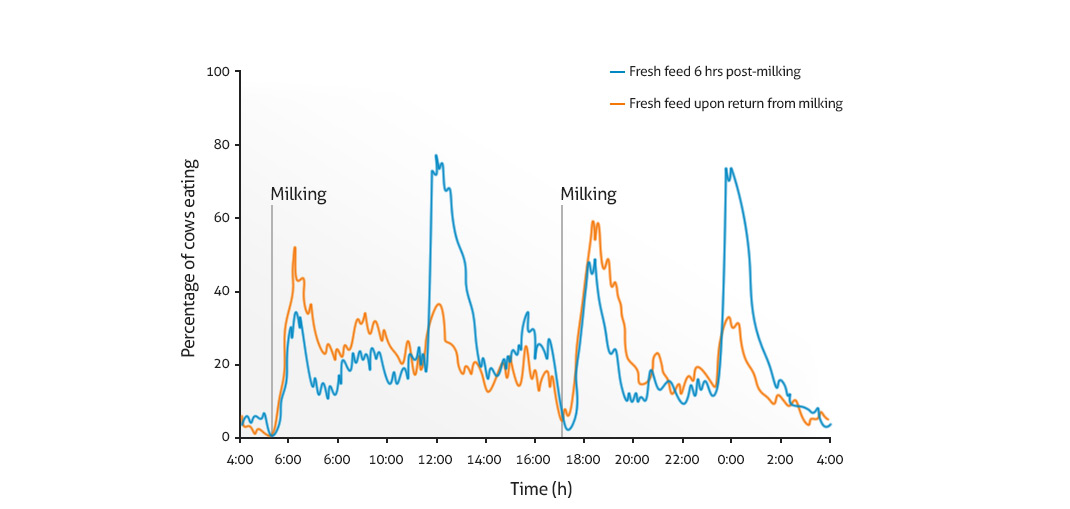
Good diet and feed provision form the basic requirements to ensure cows are healthy and highly productive. Therefore, all cows in a group must have the opportunity to eat at any time, without limitations.
The type of cows with a greater risk of reduced feed intake are newly introduced heifers, fresh cows, sick cows and lame cows. These cows will be the last to have the chance to eat due to the competition that exists at the feed bunk.
Another problem is that other dairy cows are selective about what types of feed they eat. Therefore, the at-risk cows will only receive the remaining feed the other cows have left; the best feed is gone and the content of the remaining feed is often lower quality. Adjusting feeding management by reducing crowding at the feed bunk, feeding more often, feeding at different times or by allowing more residual feed, may lead to improvement of feed intake and the type of fresh feed the at-risk cows eat.

Percentage of cows per group present at the feed bunk over a 24-h period (percentage for each 60-s interval during the day) for 2 treatments: 1) cows were milked and fed at 0530 and 1730 h, and 2) cows were milked at 0530 and 1730 h and fed at 1130 h and 2130 h. Data were averaged for 7 d per treatment for 4 groups, each containing 12 cows. Data are presented from 0400 h, since this was a time of low feeding activity for both treatments.
Above is an example showing how feeding management can affect eating behavior. This type of data can be used to demonstrate how cows eat and to monitor the effects it causes.
